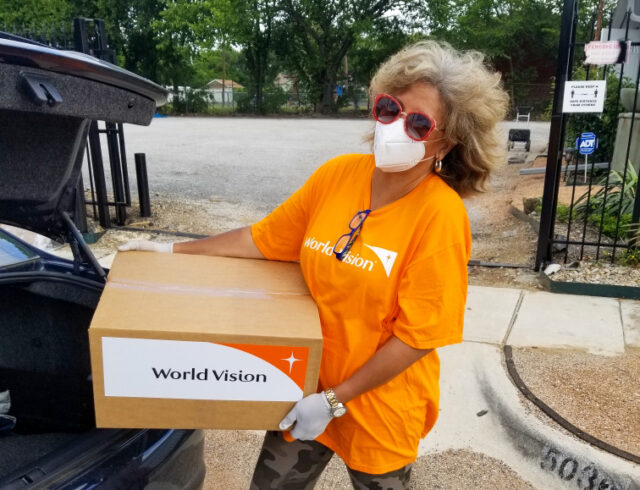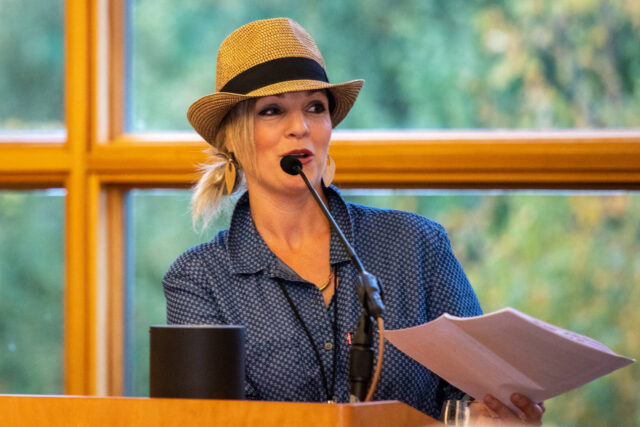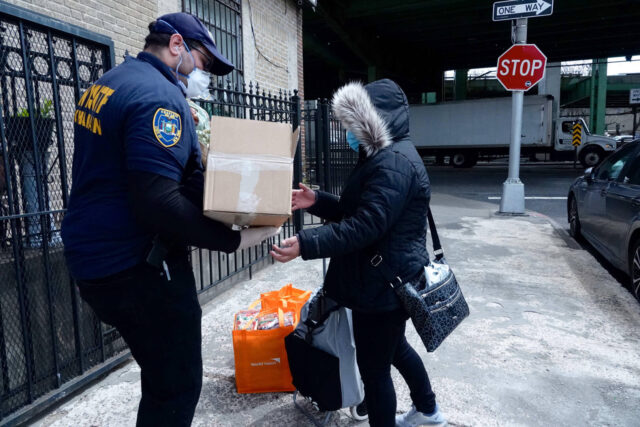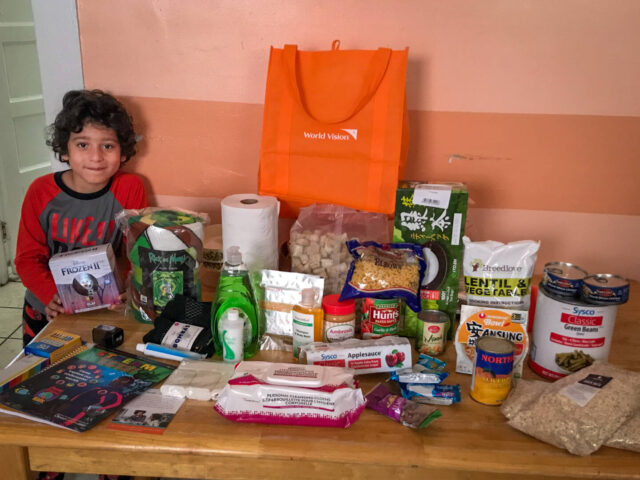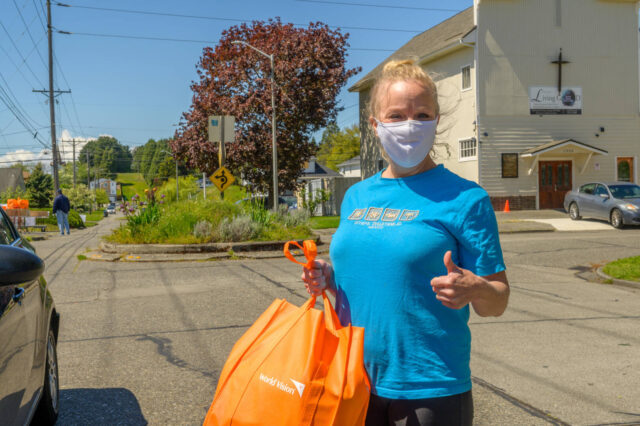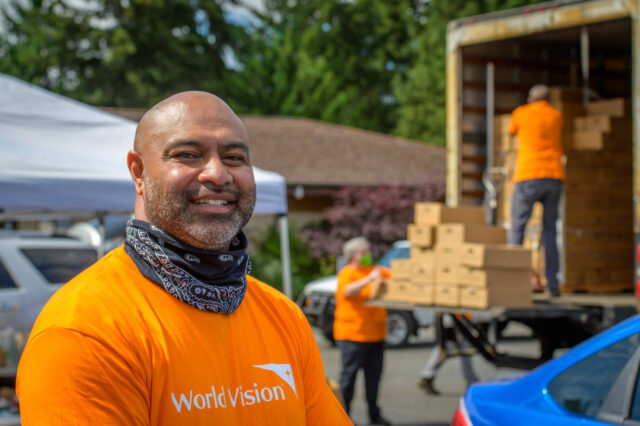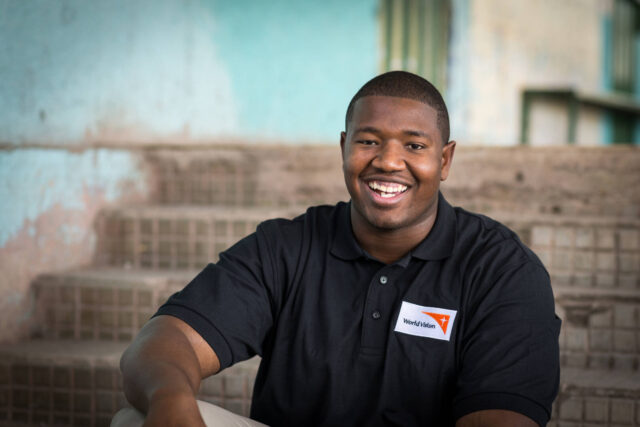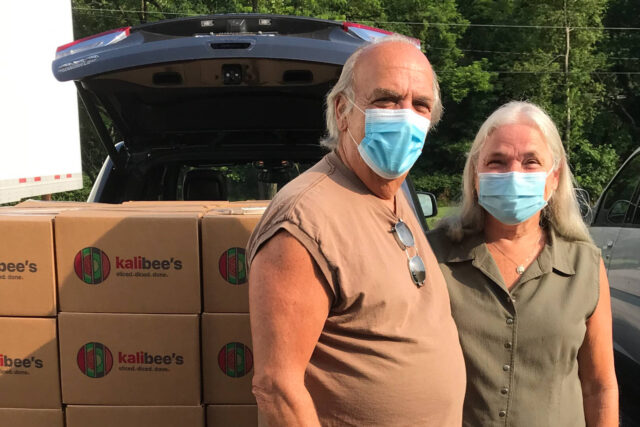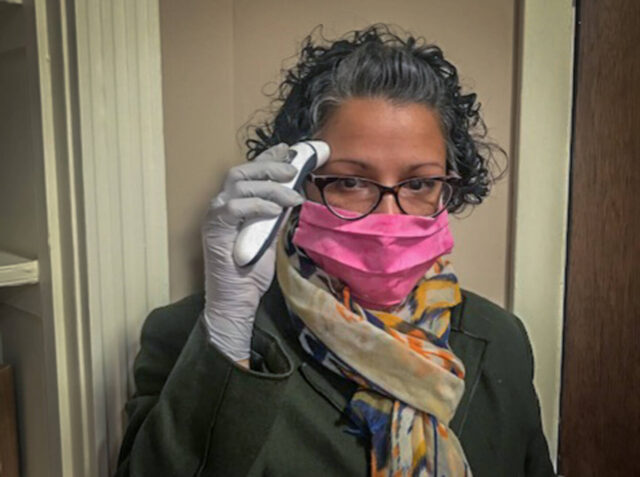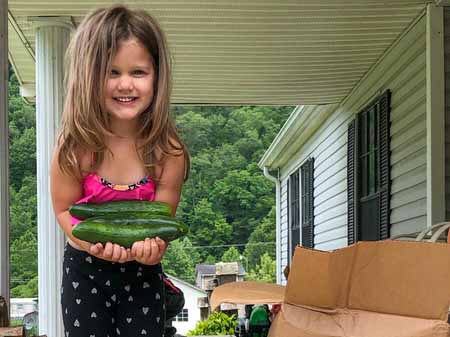Pastor Helen Epps serves her Fort Worth, Texas, community by providing World Vision Family Emergency Kits to people who are struggling economically because of the coronavirus pandemic.
News & Stories
United States
Seeking to serve: Child Ambassador Linnae Gomez
Having experienced hunger growing up, a World Vision Child Ambassador now uses her talents to fundraise for World Vision Family Emergency Kits to help feed hungry families in the United States.
From sorrow to servant
Pastor Fernandez’s past homelessness helps him understand what his parishioners and people in the surrounding community are going through as they face the economic impacts of the coronavirus pandemic.
Relief supplies support family in need
Single mother Chabeli says that supplies distributed through a partnership between a local church and World Vision were given with love. The supplies included shelf-stable food, school supplies, and items to sanitize their home and hands.
Despite challenges, Heidi walks in faith each and every day
Heidi and her sons were starting a new chapter in their lives when the coronavirus hit, reducing her work hours. Still, she finds she has plenty to be grateful for in her life.
Providing hope one box of food at a time
A Washington state pastor draws upon his past of adversity as he offers food, along with hope and joy, to families struggling due to the coronavirus pandemic.
How to cope during a pandemic: Tips from an NFL player
We asked NFL player Kelvin Beachum Jr. how he was coping during the pandemic while he was getting treatment in between practices and games. Explore his helpful tips for you and your family, a way you can support other Americans, and his amazing proud-daddy moment.
Acts of mustard-seed faith during the time of COVID-19
A retired West Virginia schoolteacher and her husband channel their energy and faith into providing food to families in need during the coronavirus pandemic. Through World Vision partner, The Mustard Seed, they’re distributing fresh food to families.
PPE donations are “like gold” for a World Vision partner
During the early days of the coronavirus pandemic, personal protective equipment became hard to find. When World Vision’s donation to Youth Challenge of Connecticut included a hard-to-come-by thermometer, the executive director nearly cried for joy.
Fresh food helps West Virginia family feed children during pandemic
During the COVID-19 pandemic, a West Virginia family received the blessing of a Fresh Food Box from World Vision and Mountain Heart Community Services. The family has struggled since losing income during the pandemic.
